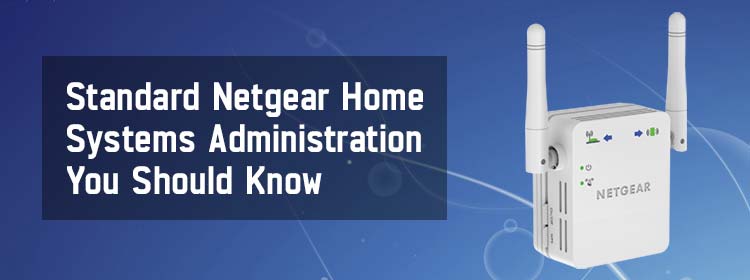Netgear WiFi range extenders offer you great WiFi connectivity all over the home or workplace. Security features like WEP and WPA-PSK are incredible. Netgear offers a wide array of home systems administration to make your WiFi network secure. Let’s get to know about various Netgear home systems administration.
Netgear Home Systems Administration
Firewall
Firewalls create a security layer between the internet and your home wireless network. Every home network should incorporate a firewall to protect its privacy. Basically, Netgear firewalls are a blend of software and hardware. The software part enables firewalls to be customized to your particular requirements whereas the hardware part provides a superb performance to your Netgear firewalls.
Firewall features differ depending on the model – more pricey and newer Netgear products include more advanced features.
Virtual Private Network (VPN)
With a Virtual Private Network or VPN, you can make use of the internet in a remote manner. Once done with the Netgear extender setup, you can enable the VPN service from the default web interface of your extender.
SSID Broadcast
SSD broadcast is one of the standard Netgear home systems administration you should be aware of. By default, the Netgear extender broadcasts its wireless signals so that its SSID can easily be found by you to connect your PC, smartphone, or tablet.
However, you can disable the SSID broadcast to set up a hidden WiFi network. In order to create a hidden network, you should know its SSID and password.
WiFi Radio
By default, Netgear WiFi range extender’s WiFi radio transmits signals in the 2.4 GHz frequency band. In the event that you turn off the WiFi radio, then no one will be able to connect to the extender’s WiFi.
To enable or disable the WiFi radio for your extender, head over to the mywifiext web-based page. Enter the email ID and password when prompted. The extender’s menu comes into view. Go to the WiFi Section. Now, either select or clear the box that says ‘Enable 2.4 GHz WiFi’. Once done, hit the Save button.
Access Schedule
Another feature in our list of the Netgear home systems administration is the access schedule. With this function, you can control access to all users during particular periods of the day. You can set up an access schedule that prevents internet access via the extender’s network on the basis of the times you set.
MAC Address Filtering
As soon as the WiFi device connects via the extender to your router, its MAC address is translated to another MAC address. On the off chance if your router’s ACL, MAC filter, or WiFi access control is turned on, the WiFi device connects to the extender but is unable to get the IP address from the extender, preventing you from accessing the internet.
Deny Access to a WiFi Device or PC
By default, the access control is turned off so that it is easy for you to connect to the extender’s WiFi network. Netgear home systems administration enables you to deny network access to particular WiFi devices and PCs on the basis of their MAC addresses.
Every network device is designated a MAC address that is a unique 12-character physical address having the hexadecimal characters separated by colons. Log in to your Netgear range extender and enable the access control to deny access to unnecessary connected devices.
These were some of the standard Netgear home systems administration you can use to secure your WiFi network. In case of any queries, contact our technical experts immediately.


